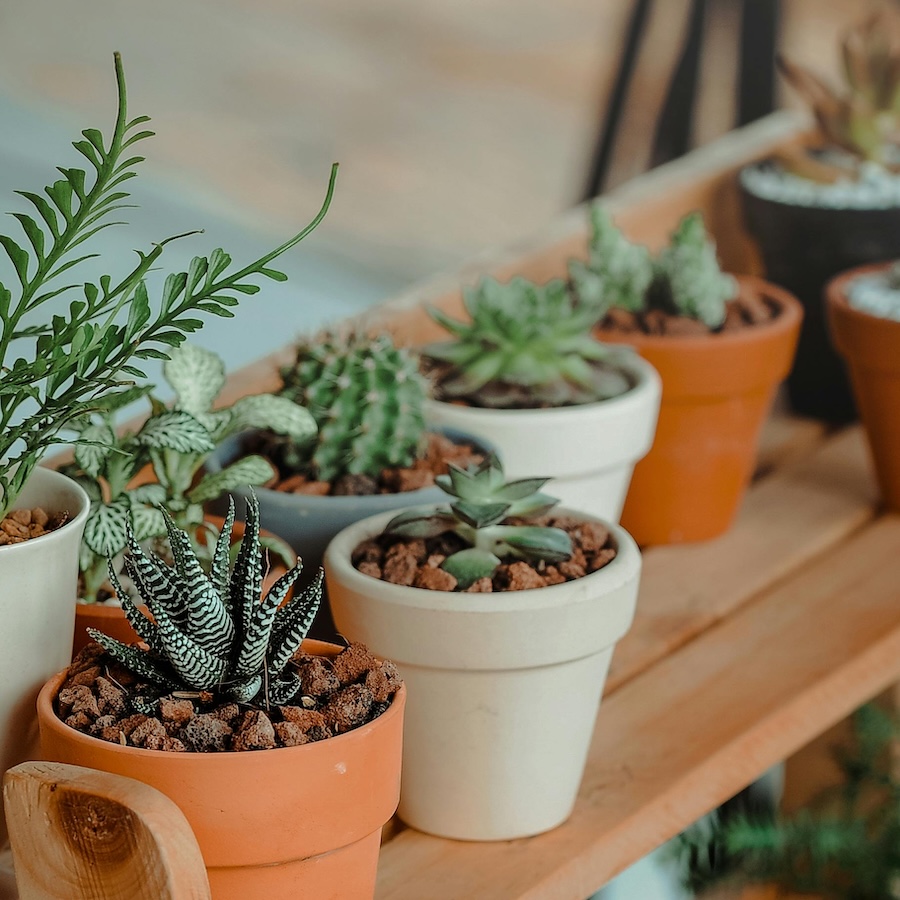Succulents are known for being slow-growing and low-maintenance, which means they don’t need frequent repotting. But over time, even the most content succulent can outgrow its pot—or run into soil issues that affect its health.
Knowing when to repot and how to do it correctly can keep your plant thriving and looking its best. Fortunately, repotting succulents is simple and satisfying with just a few key steps.
Signs It’s Time to Repot
Succulents usually need repotting every 2 to 3 years, but the timing depends on the plant, pot size, and growing conditions. Here are a few common signs that your succulent is ready for a new home:
-
Roots are growing out the drainage holes: This is a clear sign the plant has filled its current container.
-
The plant looks crowded or top-heavy: If your succulent is leaning, falling over, or producing lots of offsets (pups), it may need more space.
-
The soil no longer drains well: Over time, old soil breaks down and holds moisture too long. If the soil stays wet or compacted, it’s time for a refresh.
-
You haven’t changed the soil in several years: Even if the plant looks fine, nutrients deplete and soil structure declines with age.
-
Pests or mold appear: Repotting gives you a chance to inspect roots and remove any problems below the surface.
Choosing the Right Pot and Soil
When repotting, choose a container that is just one size larger than the current pot. Too much extra space can hold excess moisture and increase the risk of root rot.
-
Material: Terracotta or ceramic pots with drainage holes are best. Avoid glass or metal containers unless they’re used as decorative cachepots.
-
Soil: Use a gritty, well-draining mix made specifically for succulents and cacti. You can also make your own by mixing regular potting soil with sand, perlite, or pumice.
How to Repot a Succulent
Repotting is a gentle process. Here’s how to do it successfully:
-
Remove the plant: Carefully take the succulent out of its current pot. If it’s stuck, tap the sides or gently squeeze the pot to loosen the root ball.
-
Inspect the roots: Brush off old soil and check for dead or rotting roots (which will be black or mushy). Trim them away with clean scissors or shears.
-
Add new soil: Place a layer of fresh, dry succulent soil in the bottom of the new pot.
-
Position the plant: Set the plant in place and fill around the roots with more soil, gently pressing to support the plant without compacting the mix.
-
Let it rest: Don’t water right away. Give the plant 3 to 5 days to adjust and allow any root cuts to callous before watering.
Aftercare for a Newly Repotted Succulent
Once repotted, place your succulent in bright, indirect light for a few days to reduce stress. Avoid intense sun until it has settled in. Water lightly after the rest period, then return to your normal care routine.
You may notice slower growth for a few weeks as the plant adjusts. This is normal. Soon enough, your succulent will begin sending out new roots into its fresh soil.
Final Thoughts
Repotting isn’t something succulents need often, but it can make a big difference in their health and longevity. By watching for signs of crowding, poor drainage, or aging soil, you’ll know when it’s time to give your plant a fresh start.
With the right pot, fresh soil, and a little patience, repotting your succulent is a simple step that keeps it thriving for years to come.
